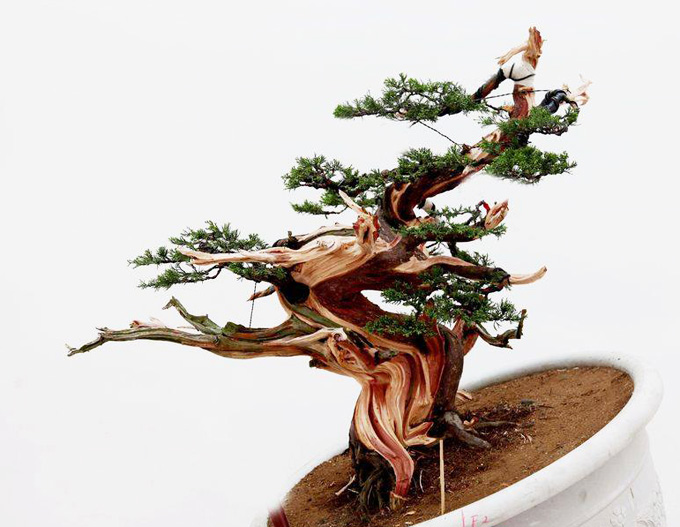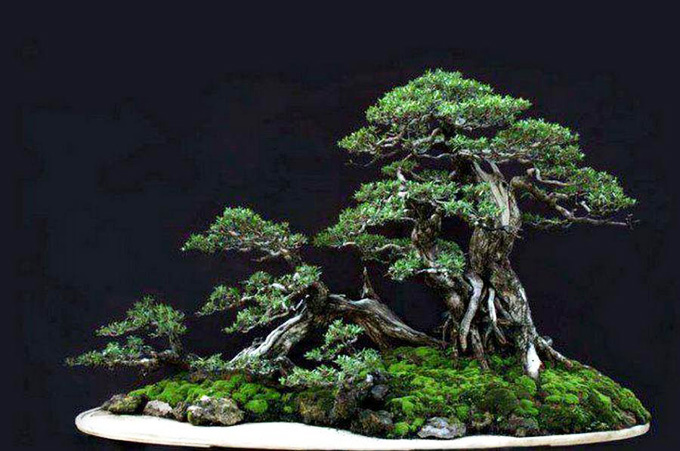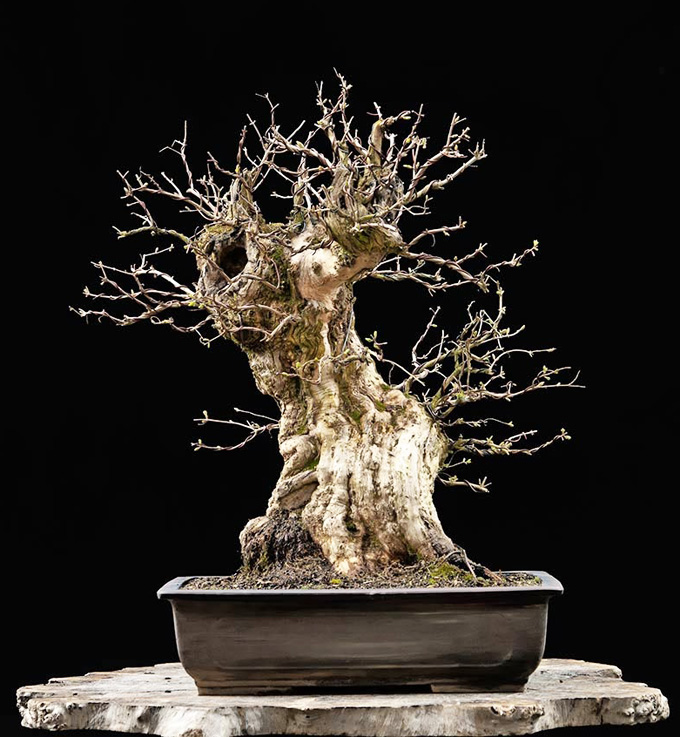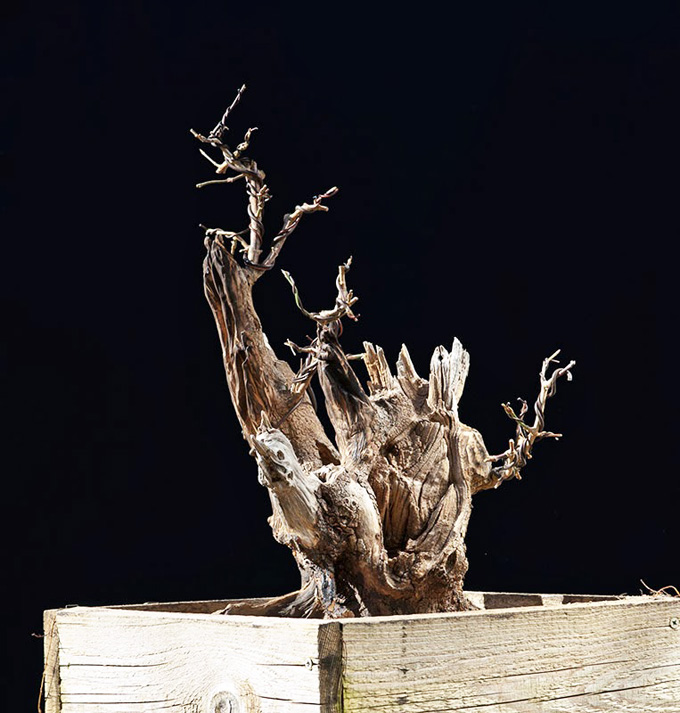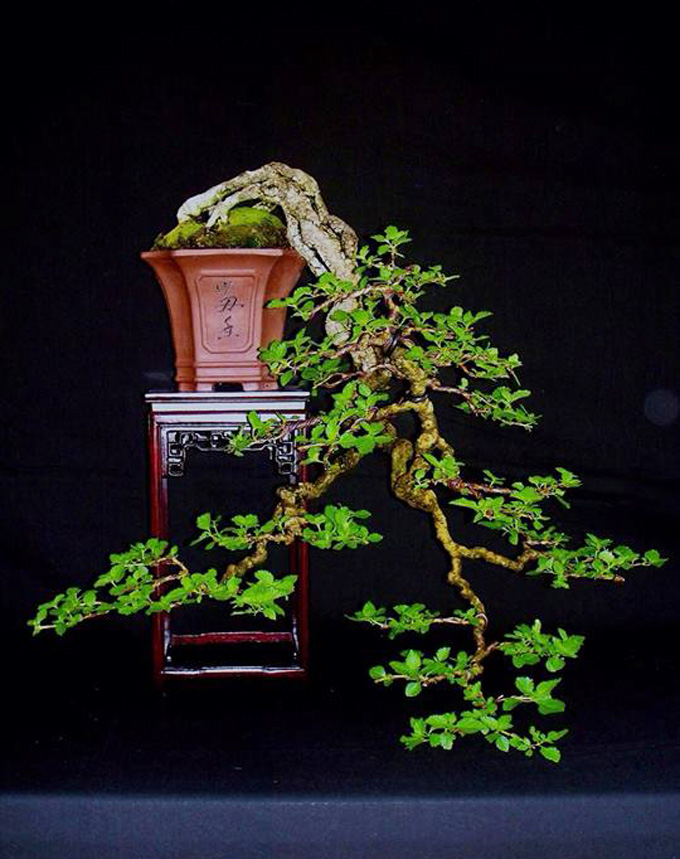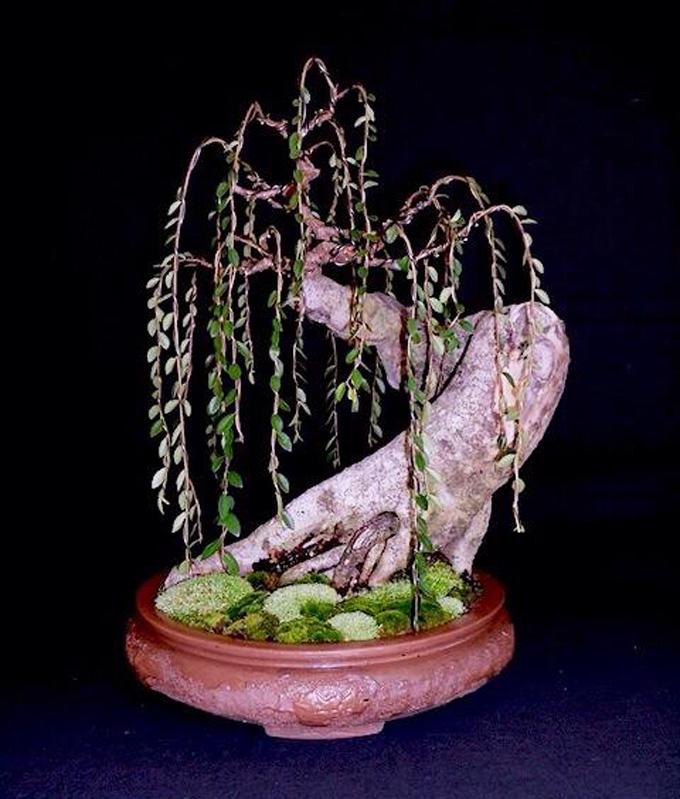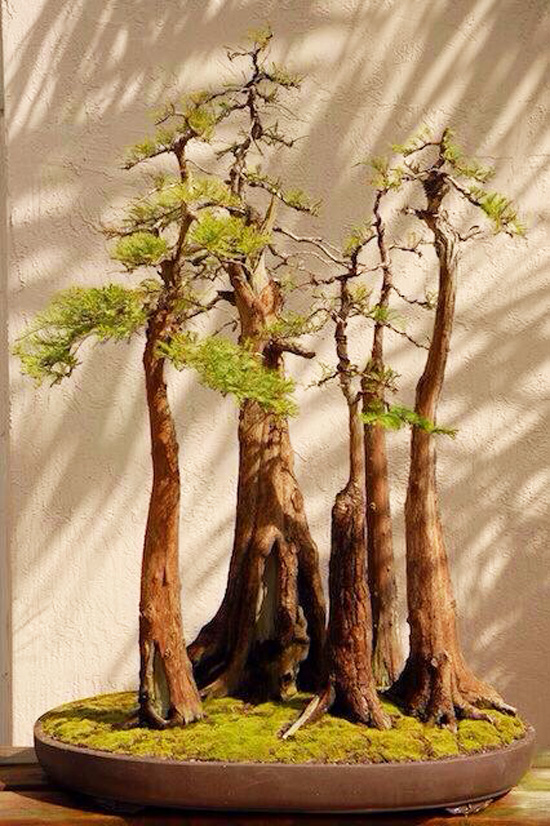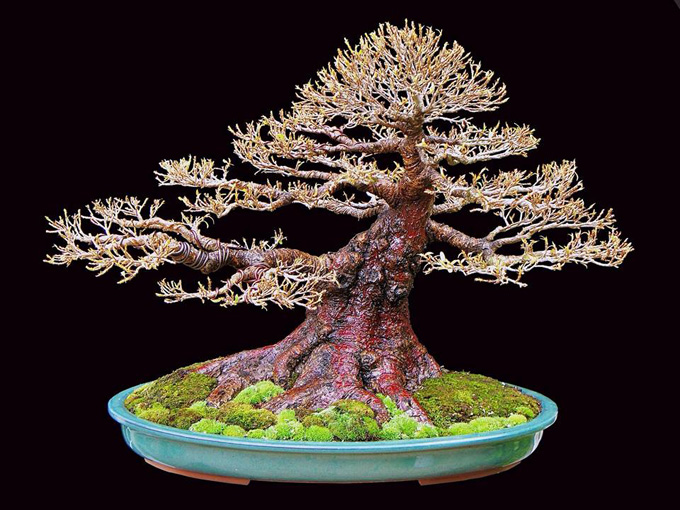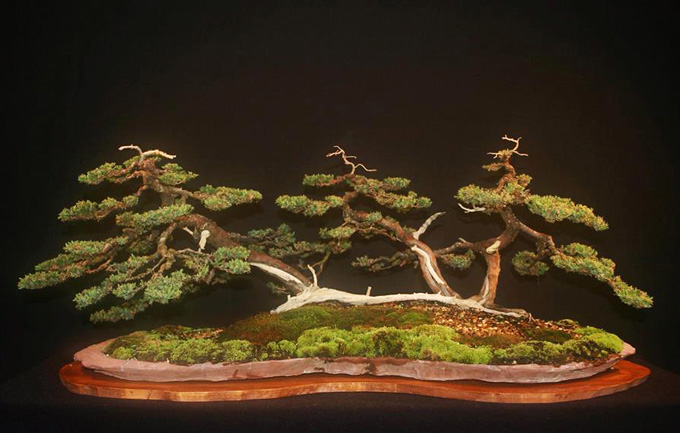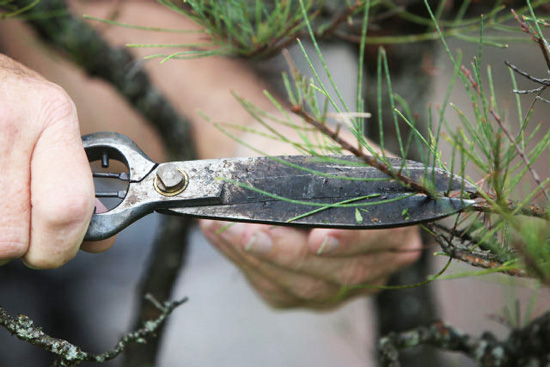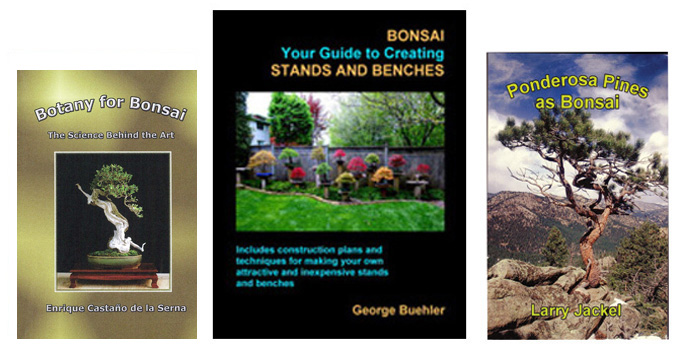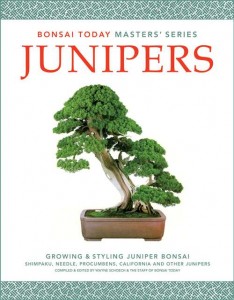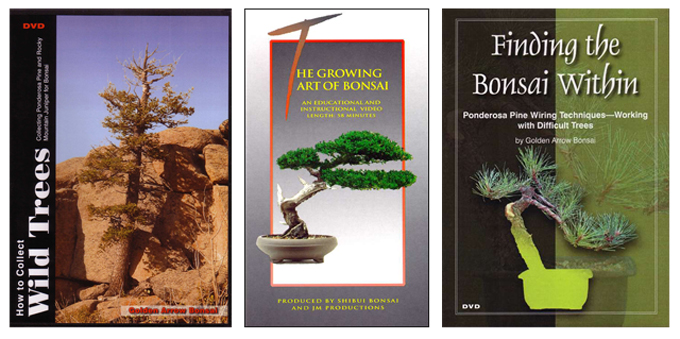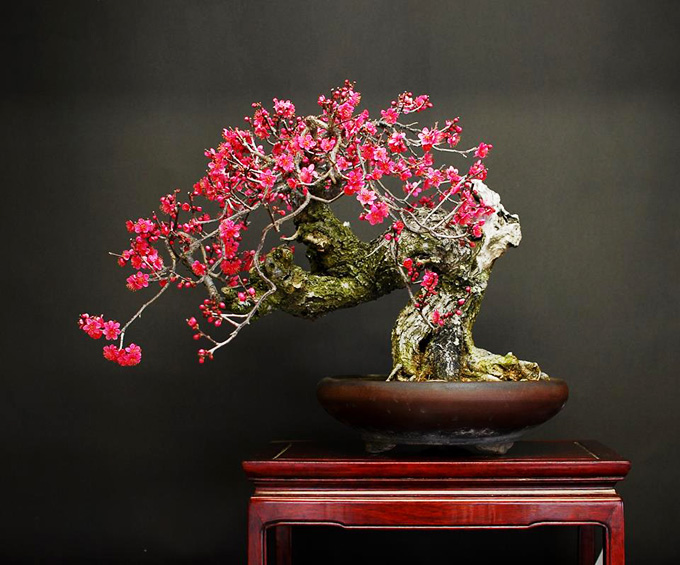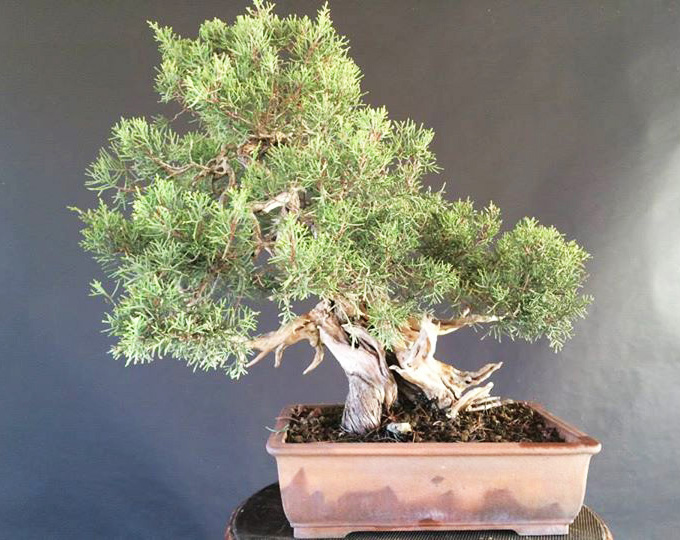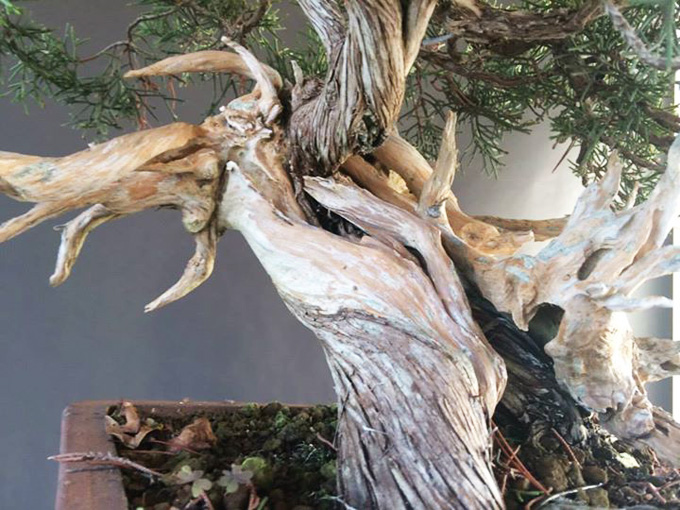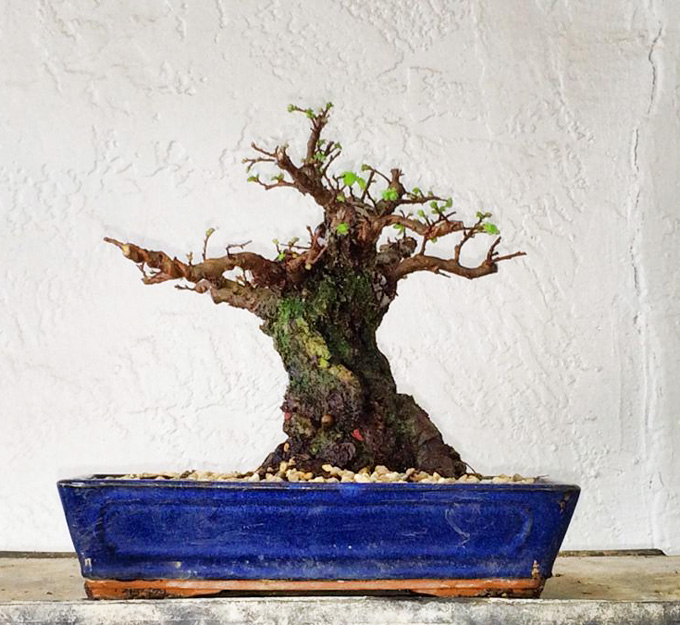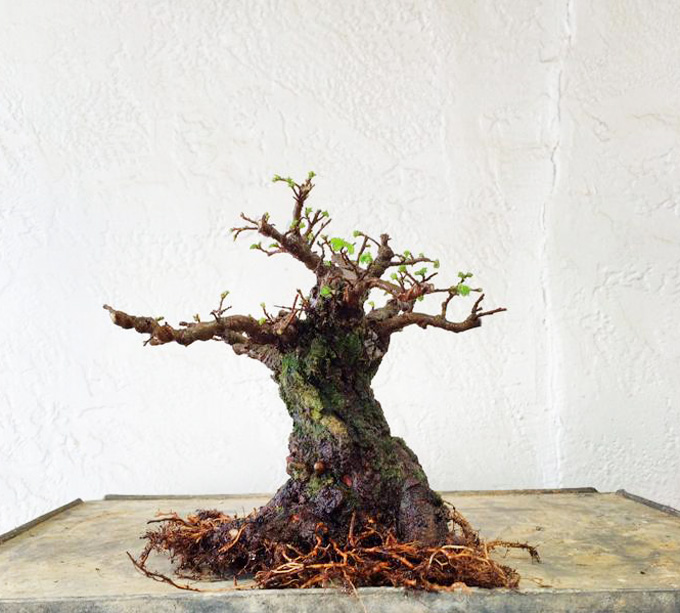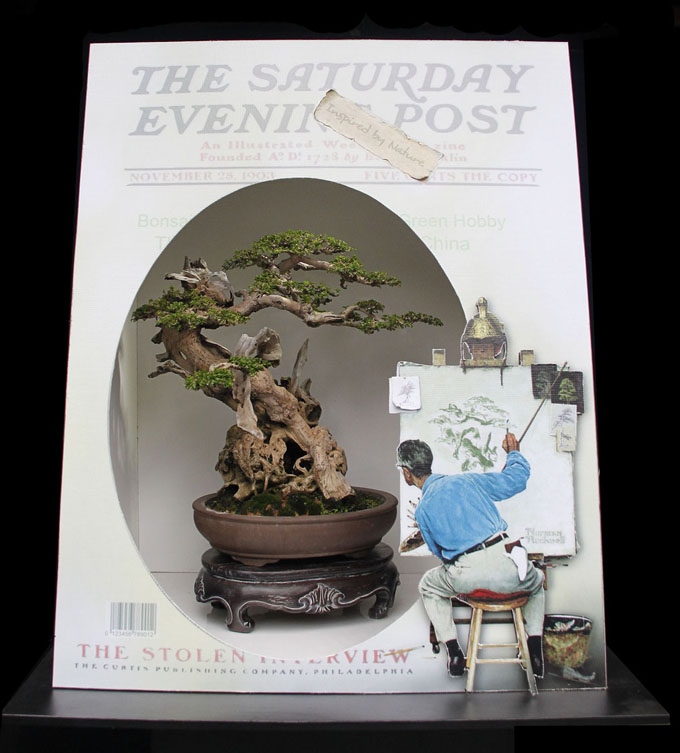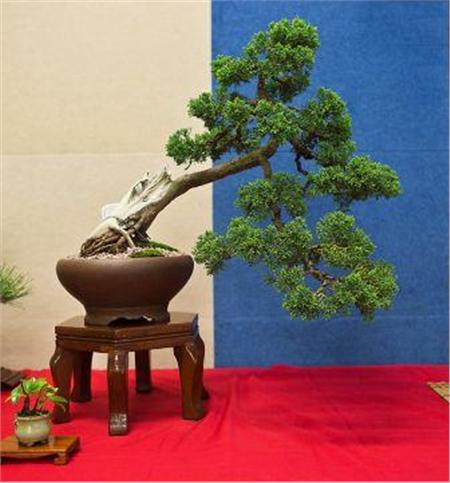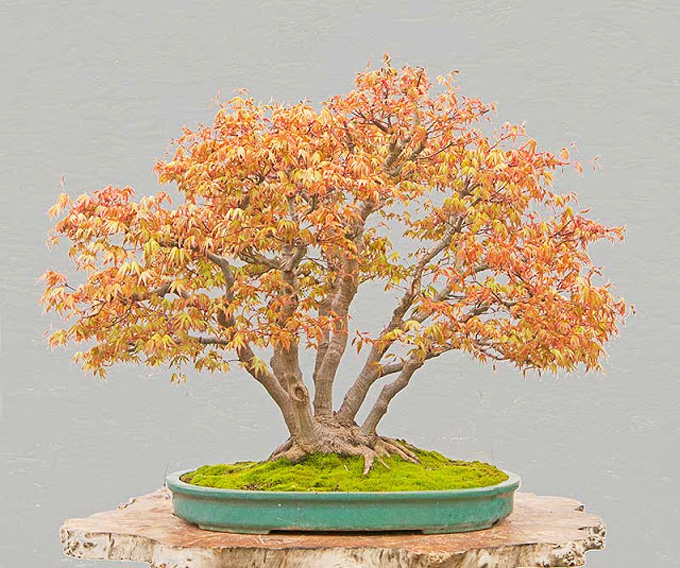 The Japanese maple that Walter Pall uses to illustrate his ‘hedge-cutting method.’ This photo was taken four years after Walter started working with this tree. The before photo is below.
The Japanese maple that Walter Pall uses to illustrate his ‘hedge-cutting method.’ This photo was taken four years after Walter started working with this tree. The before photo is below.
We ran this last year, but it’s so good and the season for bonsai hands on is almost here for most of us (already here for some), so just in case you missed it…
Walter Pall’s hedge-cutting method. Our last post presented a radical approach to soil and feeding by Walter Pall, the great bonsai innovator. This post features another of Walter’s radical innovations. This time it’s about pruning broad leaf bonsai.
Before continuing with Walter’s technique, I’ll reintroduce Jim Smith and see if I can bore you with a personal note.
I first learned about hedge shearing bonsai from Jim Smith, a highly respected American Bonsai Artist and grower who works primarily with tropical and sub-tropical bonsai. Because Jim lives in Florida, I figured that hedge shearing was only used in the tropics or sub-tropics, due to rapid rates of growth and recovery.
That was until I began field growing larches here in Vermont and decided that the only way to keep up is to use my sword shears (large one-handed shears with long blades that I originally learned about from Jim) and simply keep cutting back to the desired silhouettes. At least while they’re in the ground. However, until now, I didn’t know about Walter Pall’s hedge-cutting methods, which as it turns out (and as you might expect) are considerably more sophisticated than mine.
What follows are some of Walter’s photos (with his captions in italics) and some remarks (also in italics) that I selected from his hedge-cutting article.
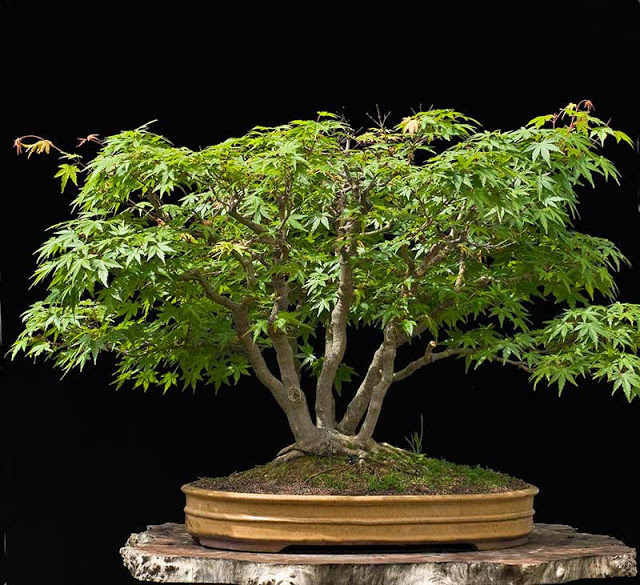 Before. “2008-05: The tree arrived in my garden in this state. The previous owner had kept it in Akadama mush and thought that he would automatically improve the tree by pinching. The crown is much too wide and flat and the leaves hide poorly structured branches. Many branches are dead. The Nebari could be much better and the maple is planted too high in its pot.”
Before. “2008-05: The tree arrived in my garden in this state. The previous owner had kept it in Akadama mush and thought that he would automatically improve the tree by pinching. The crown is much too wide and flat and the leaves hide poorly structured branches. Many branches are dead. The Nebari could be much better and the maple is planted too high in its pot.”
“Well, a few decades ago when the first bonsai trees were brought to the West, the purchasers asked how they should care for these trees. The answer was given so that no mistakes could be made. It was assumed that the owners wanted to keep the trees in the state in which they purchased them. The pinching was recommended because it is useful for trees that are ‘finished’ and ready for exhibition or sale. Nobody thought at that time that the Westerners would ever be able to develop bonsai themselves.
In the developmental phase, the goal is clearly to improve the tree. The trunk and the branches must be thickened, pruning wounds must close and the tree is to develop so many new shoots that one has a choice of useful branches. The nebari should also improve significantly. At this stage, the immediate image is secondary to the future beauty. That is why leaves can be large and the tree can look ugly for the longest time. To achieve these goals, the tree needs as much excess energy as possible which it can only obtain through the photosynthetic activity of as many leaves as possible. If exactly those sources of energy are removed too early, then the tree can’t develop. In the worst case, it dies a slow death.”
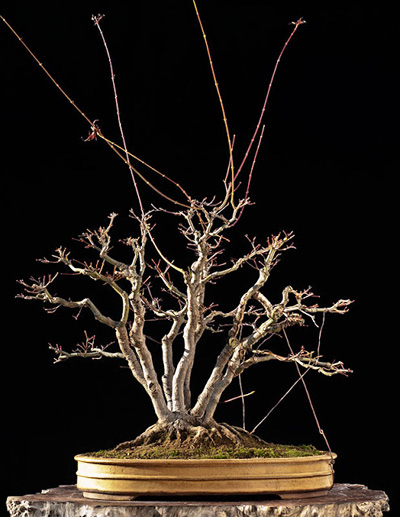 As you can tell from the sacrifice branches, Walter’s methods involve more than just hedge shearing. “2009-01: A deciduous tree can be much better evaluated without its leaves. It is now apparent that the center tree ought to be much thicker and somewhat higher. The previous owner didn’t achieve much by many years of pinching. It looks rather poorly developed. The pot by Bryan Albright seems over powering.”
As you can tell from the sacrifice branches, Walter’s methods involve more than just hedge shearing. “2009-01: A deciduous tree can be much better evaluated without its leaves. It is now apparent that the center tree ought to be much thicker and somewhat higher. The previous owner didn’t achieve much by many years of pinching. It looks rather poorly developed. The pot by Bryan Albright seems over powering.”
“The numerous leaves produce lots of energy in the form of carbohydrates that moves downwards through the branches and is deposited in the branches, the trunk, and finally the roots. The result is that branches and trunk thicken, that the surface roots – the nebari – also thicken, and that the roots grow strongly. At the same time, many new visible and dormant buds develop. The entire system “tree” is strengthened and it has good reserves for any setbacks. A radical cutback is such a setback.
In Central European climate about six to eight weeks after the first flush, in our area from the middle of May to the beginning of June, the tree is then cut back with big sheers to its previous silhouette. It is irrelevant where exactly it is being cut, or if any leaves are cut. This actually ought to occur as a partial leave pruning will allow light and air into the crown of the tree. All other growth inside the silhouette is not touched but strengthened with this method. And the tree is strongly encouraged to bud out again.”
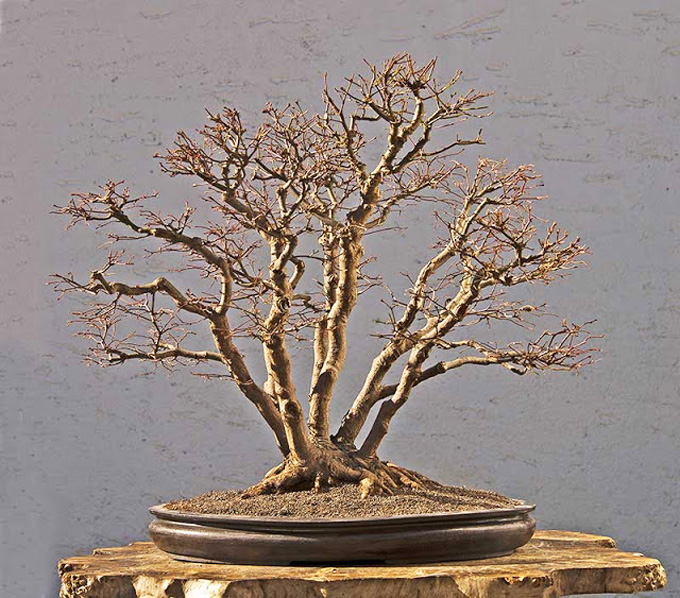 The final photo in Walter’s article. “2013-02: The tree was repotted into a very suitable pot by Walter Venne from Germany. The results of the development thus far are quite presentable. But is is by far not the end of the development. Much has changed in five growth periods, yet the work continues as before. In another five years the tree will be better again. The drawback, however, will be that he tree is not really presentable during much of that time.”
The final photo in Walter’s article. “2013-02: The tree was repotted into a very suitable pot by Walter Venne from Germany. The results of the development thus far are quite presentable. But is is by far not the end of the development. Much has changed in five growth periods, yet the work continues as before. In another five years the tree will be better again. The drawback, however, will be that he tree is not really presentable during much of that time.”
The above comments and photos are just a sampling from Walter Pall’s ground-breaking article on his hedge-cutting method.
The following photos are not by Walter.
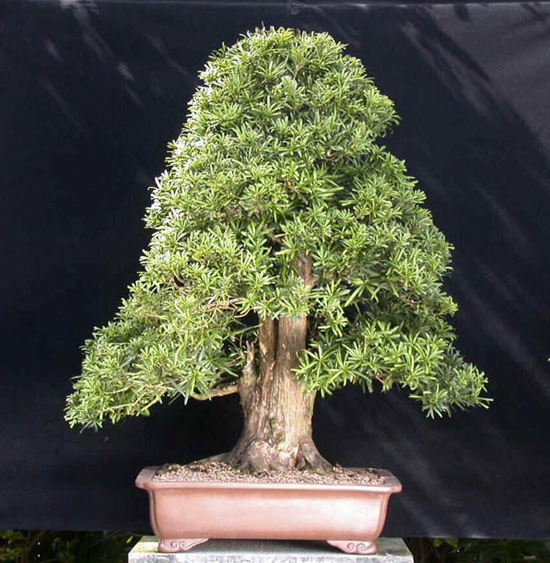 Podocarpus macrophylla by Jim Smith. My best guess is that Jim used his own hedge shearing method to develop this tree. Photo is from The Art of Bonsai Project.
Podocarpus macrophylla by Jim Smith. My best guess is that Jim used his own hedge shearing method to develop this tree. Photo is from The Art of Bonsai Project.
 Our Sword shears work quite well for the hedge cutting method.
Our Sword shears work quite well for the hedge cutting method.
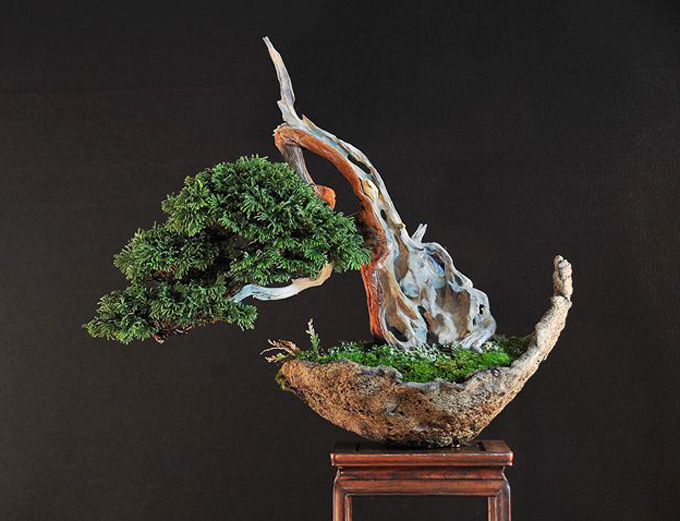 Suthin has a way with Hinoki cypress. And a way with bonsai altogether. The more I look at this tree, the more I like it. If I were to go back through our nine hundred or so posts so far and pick my favorites, this one would surely make the grade. This photo and the others in this post are from Suthin’s facebook timeline.
Suthin has a way with Hinoki cypress. And a way with bonsai altogether. The more I look at this tree, the more I like it. If I were to go back through our nine hundred or so posts so far and pick my favorites, this one would surely make the grade. This photo and the others in this post are from Suthin’s facebook timeline.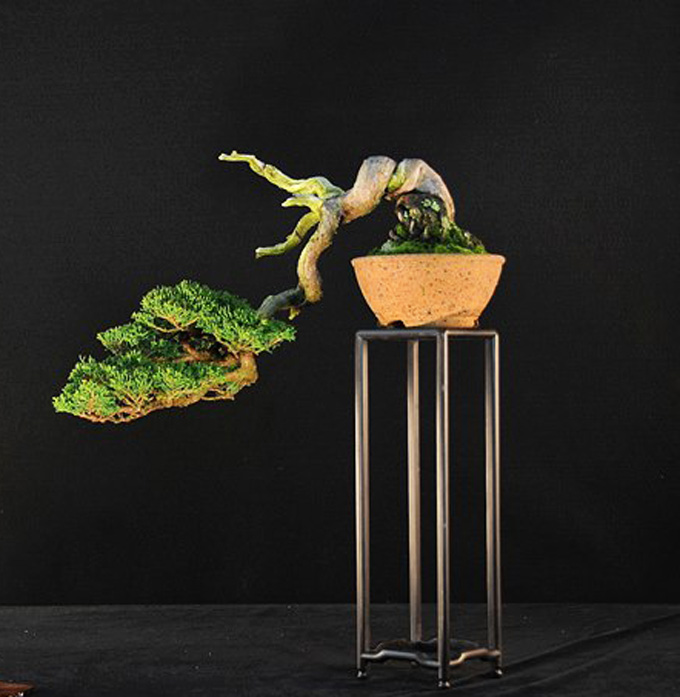 Coiled snake. Slightly out of focus, but an undeniably unique and fluid bonsai. I’m not sure I’ve ever seen another full cascade bonsai quite like this one (a little redundant, but unique is always worth pointing out).
Coiled snake. Slightly out of focus, but an undeniably unique and fluid bonsai. I’m not sure I’ve ever seen another full cascade bonsai quite like this one (a little redundant, but unique is always worth pointing out).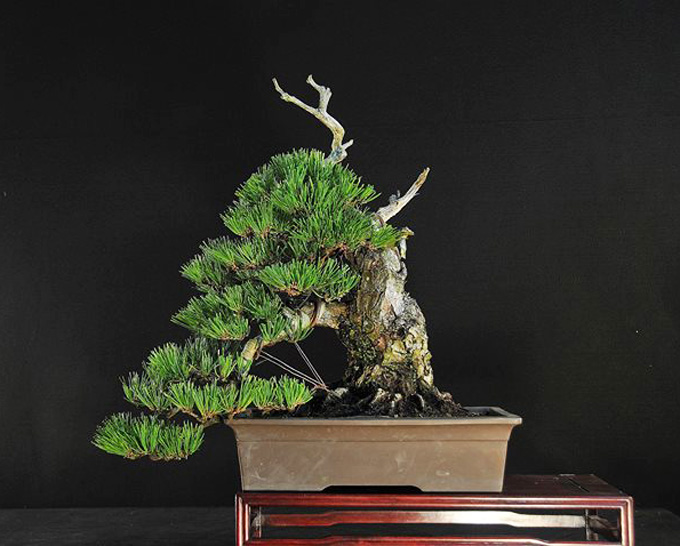 I’m running out of superlatives. Unique for sure. Powerful too. I like the way the delicate deadwood on top contrasts with the massive trunk and heavy foliage. And then there’s that deadwood arrow that almost single-handedly counters the heavy leftward movement of the tree.
I’m running out of superlatives. Unique for sure. Powerful too. I like the way the delicate deadwood on top contrasts with the massive trunk and heavy foliage. And then there’s that deadwood arrow that almost single-handedly counters the heavy leftward movement of the tree.  In process from informal upright to slant style. Or he is planning another cascade?
In process from informal upright to slant style. Or he is planning another cascade?  I think we’ve shown this photo before. It’s another Hinoki with great deadwood. Great pot too.
I think we’ve shown this photo before. It’s another Hinoki with great deadwood. Great pot too. 